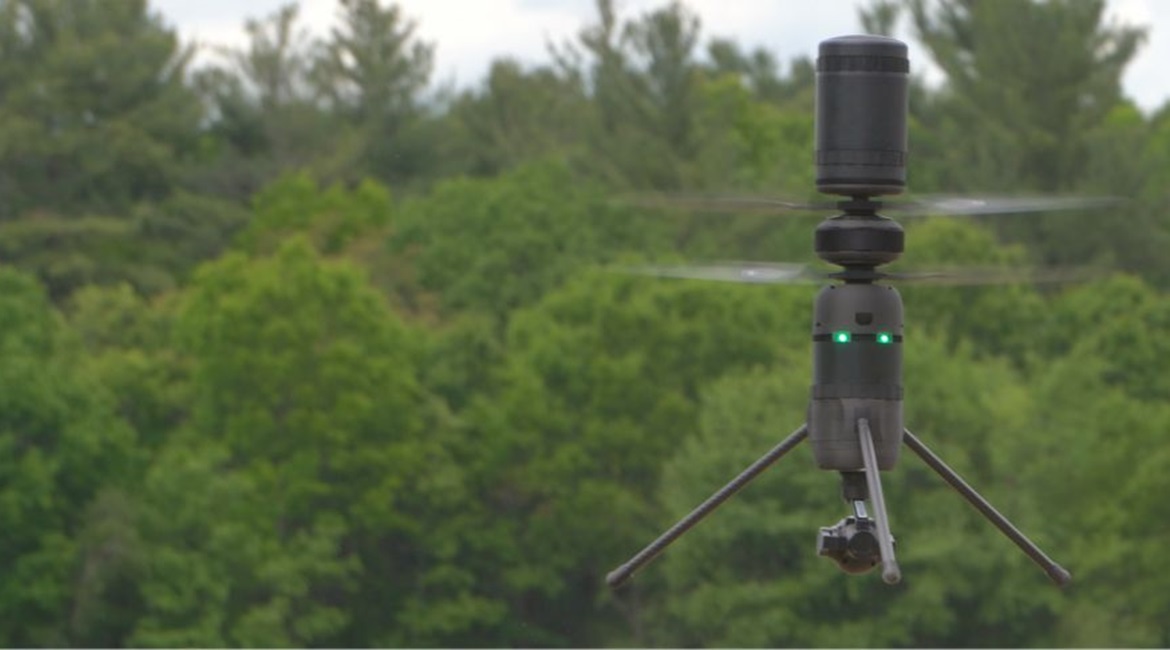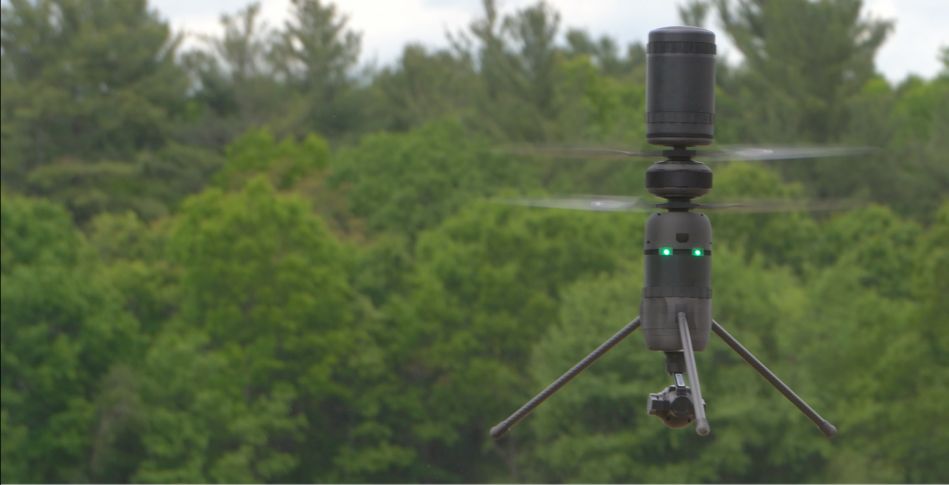
The cylindrical design of Ascent Aerosystems’ Spirit small unmanned aerial system (sUAS) makes it able to operate in all weather conditions with less weight than the quadcopter UAS, according to a company executive.
Ascent Aerosystems CEO Peter Fuchs told Janes on 5 October ahead of the Association for Unmanned Vehicle Systems International (AUVSI) Xponential trade show that the cylindrical design makes the aircraft easy to seal from weather with O-rings. Many quadcopters cannot fly in precipitation.

Ascent Aerosystems’ Spirit cylindrical coaxial rotor small unmanned aerial system (sUAS). The aircraft is about 28 cm tall and roughly 11 cm in diameter. (Ascent Aerosystems)
The Spirit is about 28 cm tall and roughly 11 cm in diameter. Fuchs said the Spirit’s compact nature and its cylindrical design makes it rugged enough to fly in austere conditions.
Cylinders, he said, add strength without adding a lot of weight, which is why the design is used for rockets. Fuchs said though rotor blades are fragile, the Spirit has crashed hard, but flown minutes later after replacing the blades.
Ascent Aerosystems has stripped out all the extra parts of the Spirit’s airframe. There are no extended arms holding motors, reducing the aircraft’s weight. The Spirit weighs 1.8 kg without battery or payload. The aircraft has a maximum operating weight of 6.1 kg, with 4.3 kg available for batteries and payloads. It also has a maximum operating altitude of greater than 14,600 feet.
The Spirit has two large coaxial rotors similar to those found on helicopters. Fuchs said this provides more than three times the lifting surface in a much smaller area compared to four small rotors as found on quadcopters.
Looking to read the full article?
Gain unlimited access to Janes news and more...






